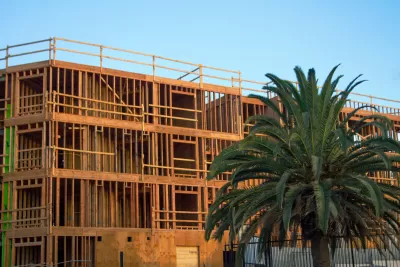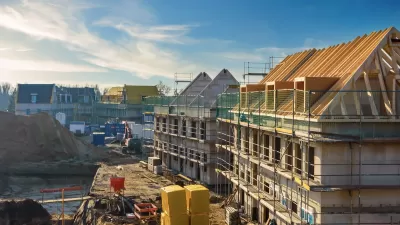It’s been five years since the California Legislature approved Senate Bill 35 to clear hurdles to housing construction. How much of its intentions has the law accomplished, and what should planners look for in the next few years?

The California legislature approved Senate Bill 35 in 2017, with goals to speed up an onerous permitting process and remove traditional obstructions to planning and building multi-family housing projects.
The law is set to sunset in 2026, but a proposed bill, SB 423, would extend and amend the process created by SB 35. Five years, or halfway, into the law’s existing ten-year window, the Terner Center for Housing at the University of California, Berkeley provides an analysis of SB 35’s accomplishments so far. The analysis catalogues and maps 156 projects. Here is how the article explains the findings of the analysis.
Five years in, we find that SB 35 has become the streamlining method of choice among affordable housing developers, who report that the law has made the approval process for new multifamily infill development faster and more certain. Between 2018 and 2021, 156 projects were approved for streamlining or had a pending application, comprising over 18,000 new proposed housing units. Most of these projects are 100 percent affordable developments ( in which all units are designated for households with lower incomes) and most of the projects are located in either the Bay Area or Los Angeles regions.
The source article, linked below, includes an interactive map and an .xlsx file with the list of 156 CB 35 projects. The full report, written by Shazia Manji and Ryan Finnigan, is also available online.
FULL STORY: Findings from the first five years of SB 35

Planetizen Federal Action Tracker
A weekly monitor of how Trump’s orders and actions are impacting planners and planning in America.

San Francisco's School District Spent $105M To Build Affordable Housing for Teachers — And That's Just the Beginning
SFUSD joins a growing list of school districts using their land holdings to address housing affordability challenges faced by their own employees.

The Tiny, Adorable $7,000 Car Turning Japan Onto EVs
The single seat Mibot charges from a regular plug as quickly as an iPad, and is about half the price of an average EV.

Seattle's Plan for Adopting Driverless Cars
Equity, safety, accessibility and affordability are front of mind as the city prepares for robotaxis and other autonomous vehicles.

As Trump Phases Out FEMA, Is It Time to Flee the Floodplains?
With less federal funding available for disaster relief efforts, the need to relocate at-risk communities is more urgent than ever.

With Protected Lanes, 460% More People Commute by Bike
For those needing more ammo, more data proving what we already knew is here.
Urban Design for Planners 1: Software Tools
This six-course series explores essential urban design concepts using open source software and equips planners with the tools they need to participate fully in the urban design process.
Planning for Universal Design
Learn the tools for implementing Universal Design in planning regulations.
Smith Gee Studio
City of Charlotte
City of Camden Redevelopment Agency
City of Astoria
Transportation Research & Education Center (TREC) at Portland State University
US High Speed Rail Association
City of Camden Redevelopment Agency
Municipality of Princeton (NJ)





























